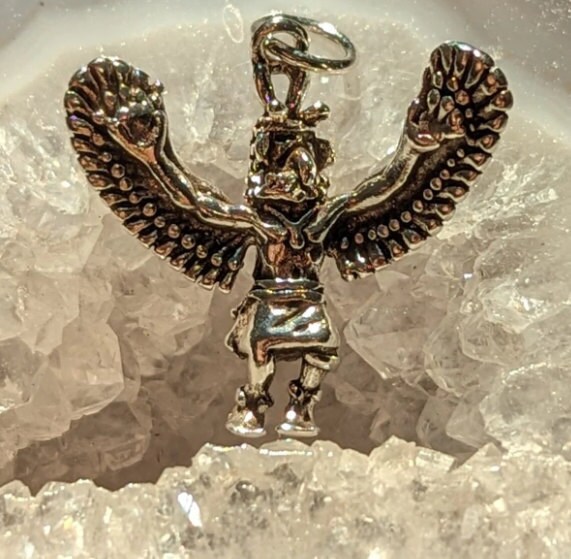The Eagle Dance is deeply rooted in Indigenous beliefs and spiritual practices. Different tribes have their own variations of the dance, but it generally serves as a way to communicate with the spirit world, ask for blessings, and celebrate the eagle’s symbolic power. Among the Hopi, Apache, Lakota, and other tribes, the dance is often performed during ceremonies related to healing, rainmaking, or expressing gratitude for the natural world.In many Indigenous traditions, the eagle is seen as a messenger between humans and the divine. With its ability to soar high above the earth, it is believed to carry prayers to the Creator. The Eagle Dance mimics the movements of the bird, with dancers donning elaborate regalia that includes feathers, wings, and beaded ornaments. The rhythmic, fluid movements of the dance convey the eagle’s flight, capturing its grace and strength.
A traditional Eagle Dance performance is a mesmerizing experience that combines intricate footwork, rhythmic drumming, and powerful chants. The dancer, often a skilled member of the community, wears an elaborate costume that includes large eagle feathers attached to the arms to create the illusion of wings. Some dancers also wear headdresses adorned with eagle plumes, symbolizing wisdom and spiritual elevation.
The dance typically begins with slow, deliberate movements, as if the eagle is preparing for flight. As the drumming intensifies, the dancer moves in sweeping, circular patterns, mimicking the bird’s ascent into the sky. The performance is not only visually striking but also deeply symbolic, representing themes of transformation, freedom, and connection to higher realms.
Drumming and singing play a crucial role in the Eagle Dance. The steady beat of the drum represents the heartbeat of the Earth, while the chants invoke spiritual blessings. The synergy between movement, sound, and emotion creates a powerful atmosphere that draws both dancers and spectators into the sacred experience.
The eagle holds immense cultural and spiritual significance across many Indigenous tribes. As one of the most honored animals, it is often associated with courage, wisdom, and protection. Its feathers are considered sacred and are used in ceremonies, prayers, and as symbols of achievement.
For example, in Lakota tradition, eagle feathers are awarded to warriors and leaders as a mark of honor and bravery. In some tribes, eagle feathers are given during special rites of passage, such as coming-of-age ceremonies, to symbolize spiritual growth and responsibility. The bird’s presence in mythology and storytelling further cements its role as a guide and protector of Indigenous peoples.
Because of the eagle’s revered status, the use of its feathers in regalia and ceremonies is carefully regulated. The U.S. government recognizes the cultural importance of eagles to Native American communities and has established special laws, such as the Bald and Golden Eagle Protection Act, allowing tribes to obtain feathers through legal and respectful means.
Today, the Eagle Dance continues to be performed at powwows, cultural festivals, and sacred ceremonies. While modern influences have introduced some variations in style and presentation, the essence of the dance remains unchanged. It continues to serve as a powerful reminder of the deep spiritual traditions that Indigenous peoples have preserved for centuries.In addition to its role in ceremonies, the Eagle Dance has gained wider recognition as a symbol of resilience and cultural pride. Many Indigenous performers travel across the country, showcasing the dance to audiences unfamiliar with Native American traditions. This exposure not only educates people about Indigenous cultures but also helps in the broader movement of cultural revitalization and preservation.
Despite the challenges posed by history—such as forced assimilation, loss of lands, and suppression of Indigenous spiritual practices—Native American communities have remained steadfast in keeping their traditions alive. The Eagle Dance stands as a testament to this perseverance, embodying the enduring spirit of Indigenous cultures.
As we appreciate the beauty of the Eagle Dance, it is essential to recognize and respect the cultural heritage it represents. By learning about and honoring Indigenous traditions, we can contribute to the broader effort of preserving and celebrating the rich history of Native American communities.


